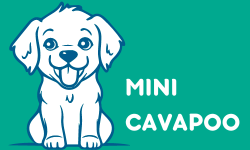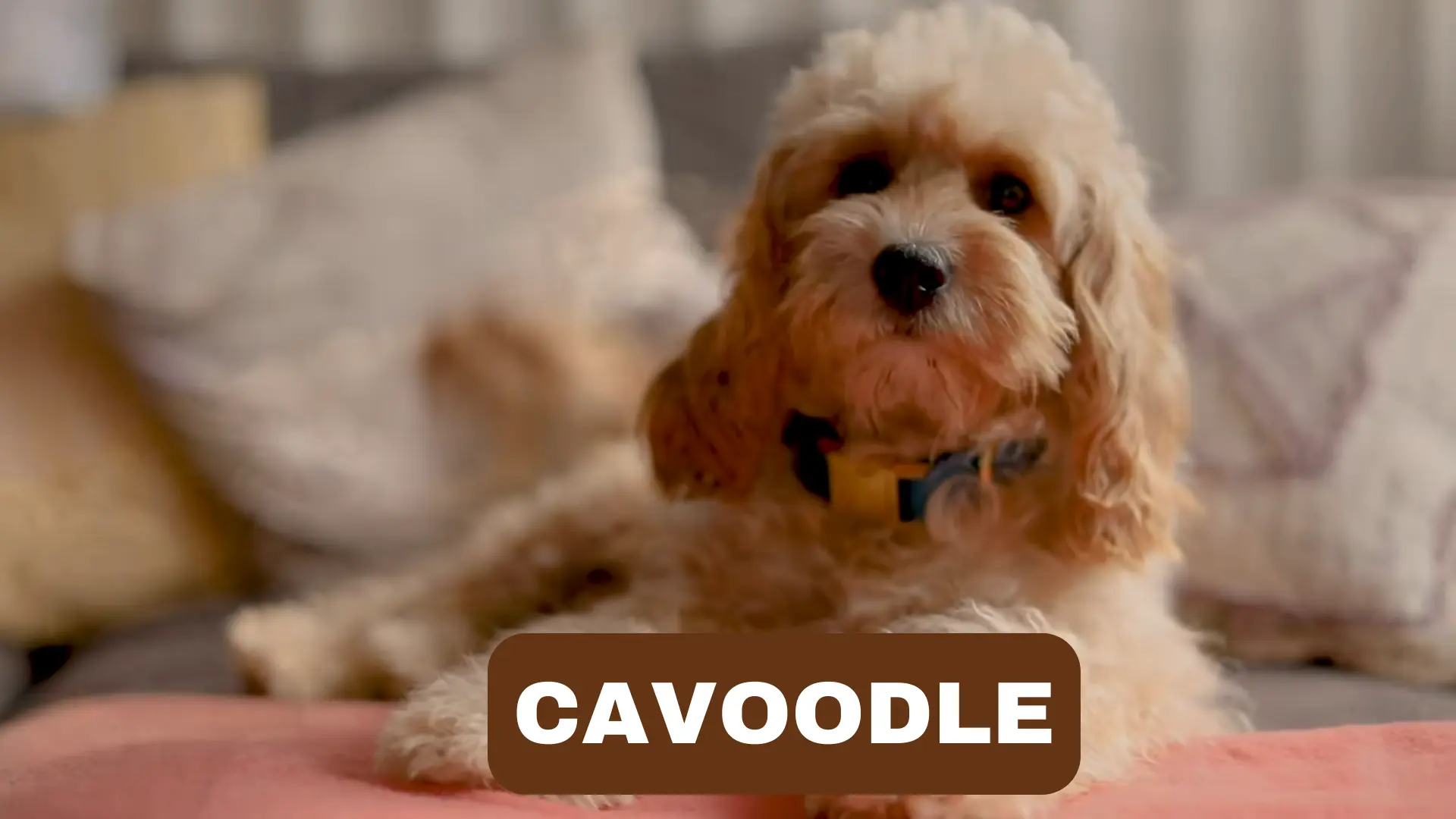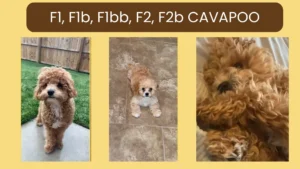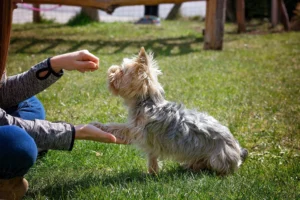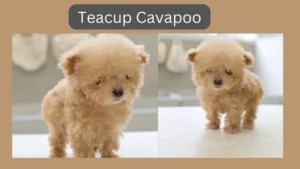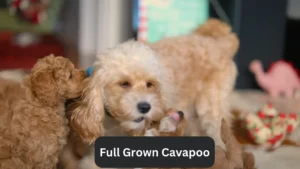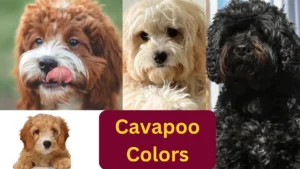Cavoodle: Get to Know All About the Cute Hybrid Dog Breed
When someone sees a cavoodle, it looks cute and beautiful. In the next moment, a thought arises to know all about this miniature cavapoo, from its origin to its breeding, so that its companionship can be retained for a long time in a managed way.
If you come here and want to know about the cava doodle, you are at the right place. I am an experienced cavalierdoodle breeder who knows all about these hybrid dogs.
In the following sections, I will elaborate on everything in your mind about caboodles – from their history, size, looks, and temperament to health, care, training, and why they make such loving family pets.
As a toy cavapoo owner myself, I will share insider tips so you can decide if adding one of these marvelous little teddy bears to your home might be the perfect choice!
What is a Cavoodle Dog?
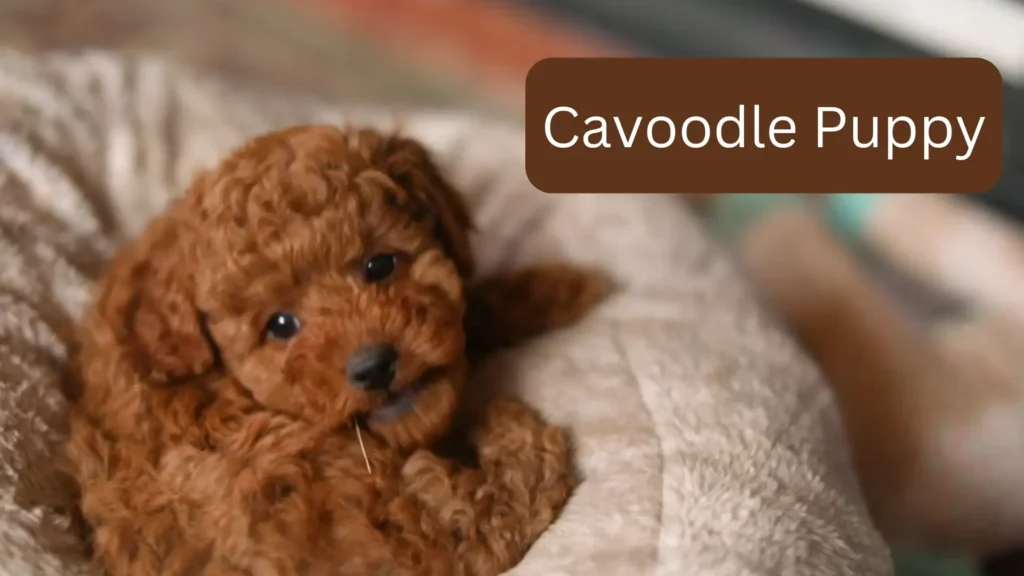
A cavoodle, also known as a cavapoo, is a mixed breed or hybrid dog. It is a cross between a cavalier King Charles spaniel and a poodle. Cavapoos are popular companion dogs because they have a sweet, loving temperament. They are also intelligent and eager to please.
Origins of the Cavoodle
The cavoodle hybrid dog breed originated in Australia in the late 1990s. Breeders crossed the calm, cavalier King Charles spaniel with the intelligent poodle, hoping to get small hypoallergenic dogs with the best traits from both parent breeds.
This mix aimed to produce friendly puppies that shed little. Cavapoos soon became very popular family pets in Australia. They then spread in popularity to North America and worldwide.
Size of Cavoodles
Cavoodles are small dogs, classed as a toy breed. The average cava poodle size is between 28–35 cm (11–13 inches) tall at the shoulder. However, Cavalier x Poodles can range in size depending on their parents.
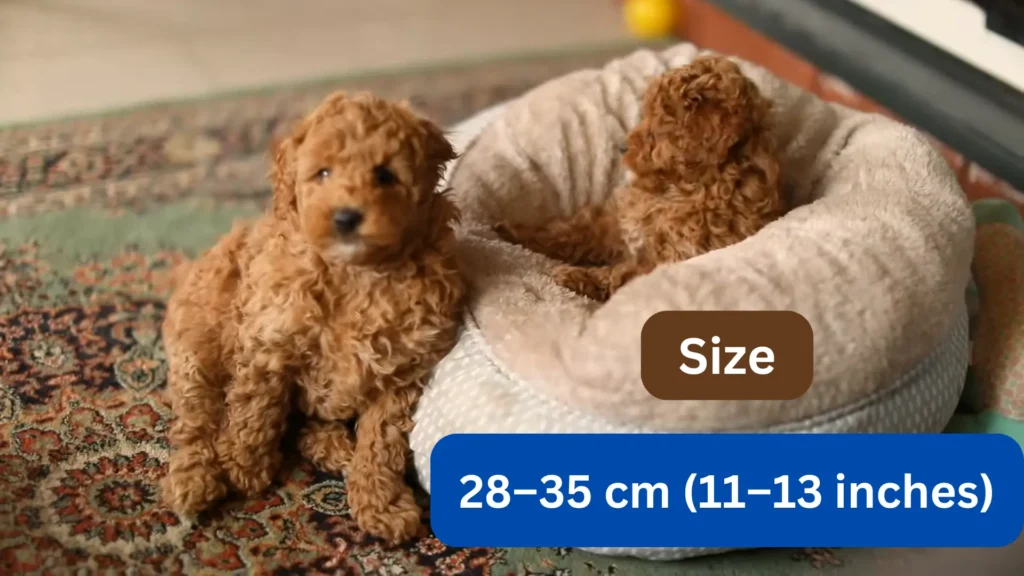
Toy or miniature poodle crosses produce smaller cavalierdoodles around 25 cm (10 inches). At the same time, miniature cavalier crosses result in larger cavapoos up to 40cm (16 inches). Most cavoodles weigh 5 to 12 pounds when fully grown.
Appearance of Cavoodles
The cavalier doodle appearance can vary greatly depending on which parent dog they take after. Their coats come in different colors, like black, white, brown, and golden. Cavoodles may be solid in color or have mixes such as black and white.

Their coat type also differs, ranging from long and wavy to soft and curly, like a poodle. Many cavapoos have extremely soft, fluffy coats resembling toy teddy bears. This earns them the nickname “teddy bear dogs.” Professional grooming keeps their coat neatly trimmed.
Cavalier x Poodles have slightly longer muzzles than cavalier King Charles spaniels with moderately sized, floppy ears. Their expressive eyes are often dark brown. They have a cute appearance with sweet, gentle facial expressions.
Temperament of Cavoodles
The cava poodle temperament is one of its most appealing traits. Cavapoos are exceptionally affectionate, calm dogs that form very close bonds with their owners. They thrive on human companionship.
Cavalier x Poodles also have playful, friendly personalities. They get along well with children and other pets when properly socialized. cavalierdoodles are eager to please and very responsive to praise and rewards during training.
Are Cavoodles Hypoallergenic Dogs?
One reason for the cavoodle popularity is their suitability for people with allergies. Cavalier x Poodles are often promoted as hypoallergenic dogs that shed little and produce less dander.
However, no dogs are completely non-shedding or hypoallergenic. cavapoos with wiry poodle-type coats tend to be better tolerated by allergy sufferers than those with flatter, furry coats. Meeting the parents can help assess if a cavalierdoodle puppy might be more hypoallergenic.
Cavoodle Grooming
As low-shedding dogs, Cavalier x Poodles require regular clipping and trimming by a professional groomer. Without proper grooming, their hair will keep growing and become matted. Most pet cavapoos have shortcuts for easy maintenance.
Cavoodle Health
When bred from health-tested parents, cavalier doodles are generally robust little dogs. Like their parent breeds, cavapoos may suffer some inherited health problems. These include heart defects, eye issues, patellar luxation, and syringomyelia.
Reputable cavalier doodle breeders screen their breeding dogs. Cavapoo puppy buyers should ask to see parent health certificates. As a hybrid dog, cavalier doodles may also have an increased risk for other crossbreed health problems.
Feeding Cavoodle Dogs
Quality nutrition and food is vital for cavapoodle throughout all life stages, from weaning to senior years. Like all dogs, cavapoos need a balanced diet rich in protein and healthy fats. Choose a high-quality commercial dog food formulated specifically for small-breed puppies or adults.
Many cavalier doodle enjoy and benefit from homemade food, too. Serve a combination of high-protein ingredients like cooked meat, fish, and eggs, along with rice, vegetables, and healthy oils. Provide fresh water at all times. Give treats sparingly in tiny portions as cava poodles gain weight easily. Avoid feeding caboodles directly from the table to prevent obesity and begging behaviors.
Exercising your Cava poodle
Despite their small size, cavapoodles have moderate exercise needs. Expect to devote 30 to 60 minutes daily to cavapoo walks and active playtime. Short, regular exercise sessions suit them better than occasional long walks.
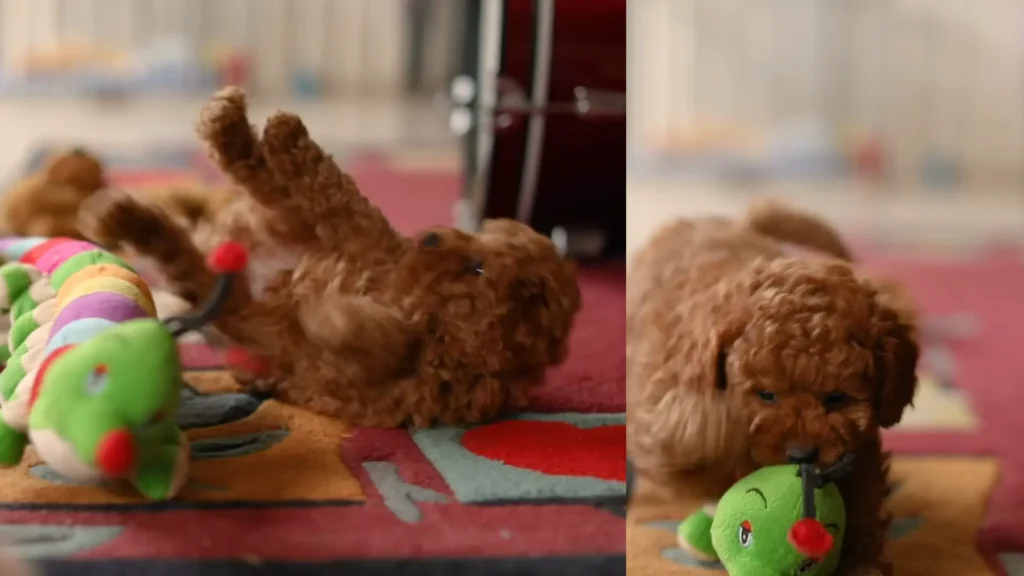
Training Cavoodles
The cavapoodle temperament combines intelligence, eagerness to please, and an ability to form strong bonds with their owner. This makes them highly responsive to training. Use positive reinforcement reward-based methods which cavadoodles thrive on.
Start training in short, engaging sessions as young puppies. Socialization is also vital for cavoodles to accept handling, meet other pets, and feel secure in new environments. Attending puppy preschool classes gives them important early social opportunities.
Cava doodle Behavior Problems
Cavalier x Poodles are largely free of serious behavior issues when bred well and owner-raised with proper care, socialization, and training. Potential problems to watch include:
Separation Anxiety
cavapoodles form exceptionally close ties to their people. Some cavadoodles may fret or show distress behaviors like chewing, barking or toileting when left alone. Prevention aims to build independence tolerance gently from young ages by leaving puppies alone initially for very short periods, then increasing duration gradually. Providing stimulating toys and activities inside can also help ease separation stress.
Begging/Stool Eating
Cava doodles can be persistent beggars for food or develop stool-eating habits if owners free-feed kibble. Have scheduled mealtimes rather than food out all day to minimize begging. Promptly pick up and dispose of dog poop in securely lidded cans to prevent stool scavenging.
Barking
Some cava poodles bark excessively to seek attention, greet visitors, or when anxious. Reduce barking triggers and reward quiet behavior. Teaching a stop-barking cue replaces barking demands with a more constructive communication method.
Aggression
Serious aggression issues are atypical in caboodles. However, under-socialized Cavalier x Poodles may snap or nip through fear, especially around small children. Always supervise cavadoodle interactions with kids, properly introduce new pets, and seek professional advice if aggression appears out of character.
Are Cavoodles Good Family Dogs?
The gentle, affectionate cavoodle temperament combines well with children. When socialized young, cavapoodles bond wonderfully with kids of all ages. They enjoy playing games, learning tricks, and accompanying children on outdoor adventures.
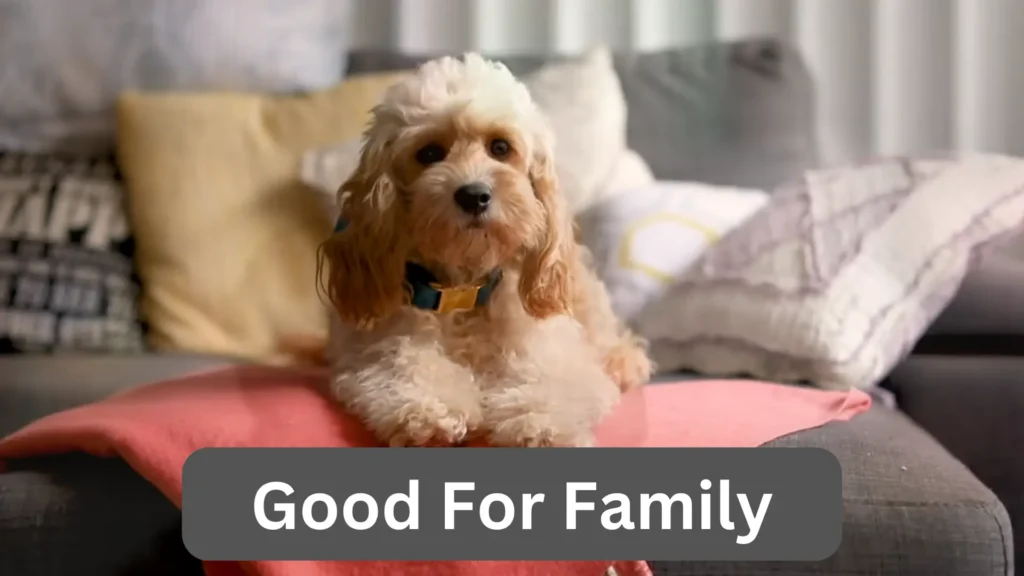
However, cavadoodles are dainty dogs under 10 pounds, so young children need teaching on safe handling and interaction. Proper puppy socialization ensures cavoodles feel relaxed around noisy, boisterous kids, while supervision prevents rough play.
Cavoodles and Other Pets
The sociable cavapoodle usually mixes well with other household pets, too. They get along great with cats and larger dog breeds when slowly introduced and properly trained.
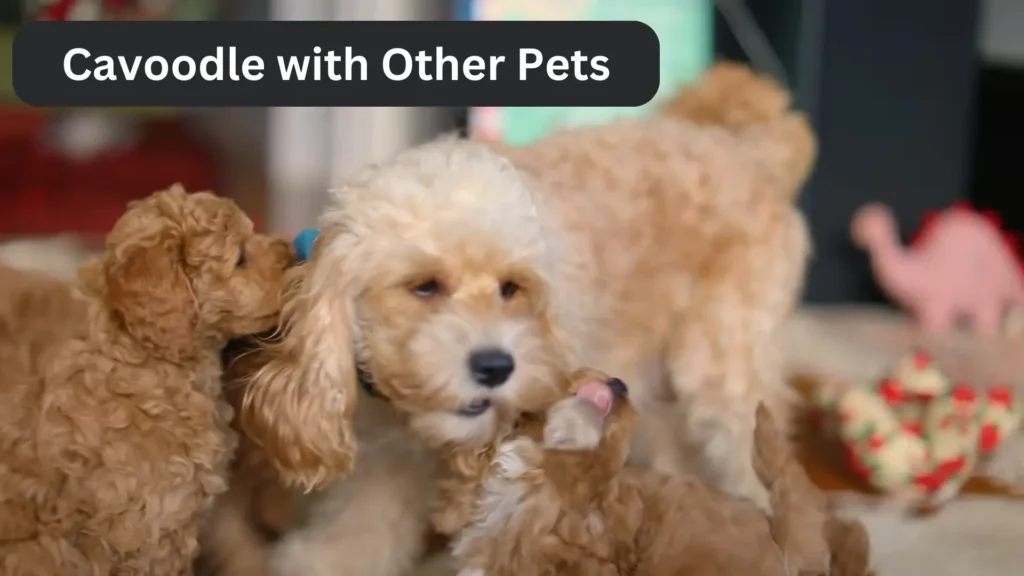
As with children, manage all cava poo interactions, use rewards to encourage polite behavior, and correct unwanted chasing or roughhousing immediately. Such positive conditioning helps build wonderful cavadoodle bonds with resident pets.
Cavoodle Lifespan
Crossbreed dogs often live longer than their purebred parents by having hybrid vigor. The average cava poo lifespan is 10 to 15 years. Some cavoodles live even longer, up to 18 years.
Help your cava poodle achieve its potential longevity by sourcing from health-tested parents, providing excellent preventative care, and following a balanced diet and exercise plan throughout their life.
Adopting Cavoodles from Shelters
Some cavoodle lovers choose to adopt retired show dogs or rescue cavapoo needing new homes. Check local shelters, breed club rehoming networks, and cavapoodle rescue groups online.
The huge popularity of cavadoodles means rescued dogs rarely stay available long. Be ready to apply immediately when one becomes available. Prepare your home in advance so pre-adoption home checks get promptly approved.
Travel with cavoodle
The small, affectionate cavoodle is a wonderful traveling companion for adventures near and far. They easily adapt to new environments and transport modes when sufficiently socialized young.
As toy dogs under 10 pounds, cavadoodles fit well in planes, trains, automobiles, tents, hotels, and all kinds of travel lodgings. Their fluffy coats may need protection from temperature extremes. Harnesses keep cavapoodles safely restrained, while movable crates or carriers provide safe confinement.
Last Words
In summary, the cavoodle is an increasingly popular hybrid dog breed developed in Australia by crossing cavalier King Charles spaniels with poodles. Cavadoodles make wonderful family pets and companions due to their small size, cute teddy bear looks, affectionate nature, intelligence, trainability, and low-shedding coats. Proper care, training, and early socialization allow cavapoodles to thrive and share many happy, healthy years, brightening owners’ lives with their gentle, playful personalities.
